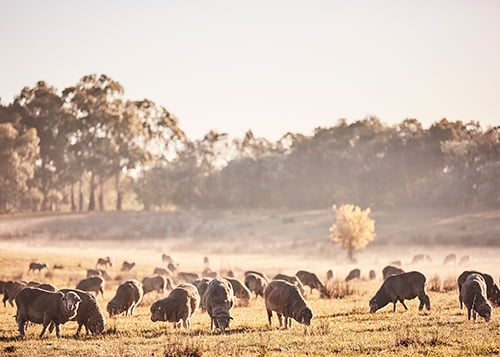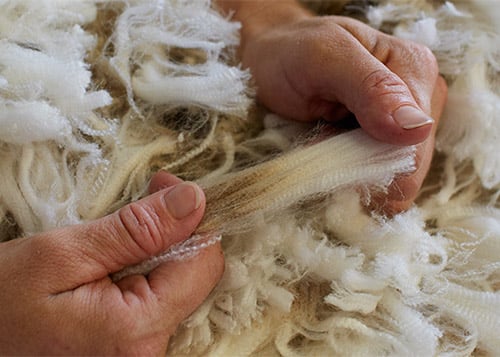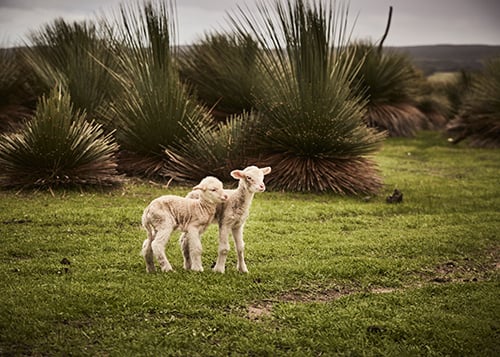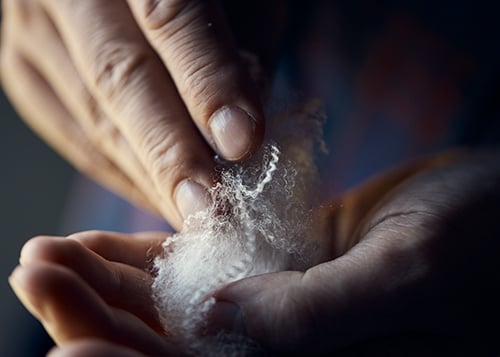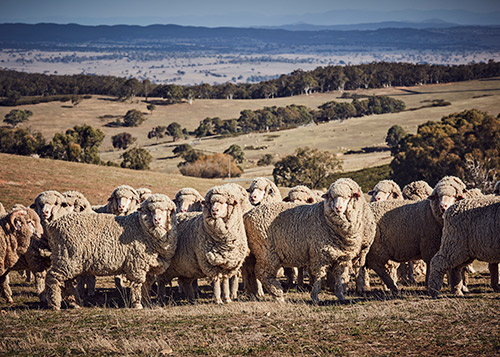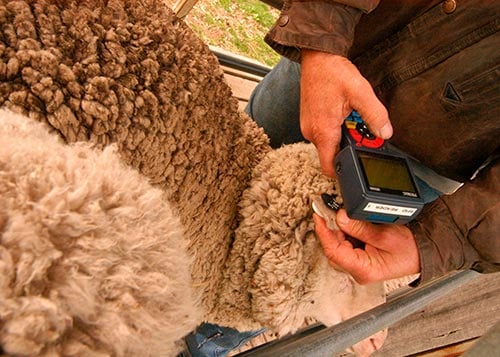This unit helps students explore the journey of Australia’s most iconic natural fibres — wool — from farm to fashion.
Using wool as the context, From farm to fashion provides an ideal opportunity for Year 1 students to investigate how everyday things can be physically changed. Students investigate how the shape of wool can be changed by felting, twisting, knitting and weaving.
Some students may have experience with wool through clothing or home furnishings such as blankets. However, many Year 1 students may not be aware sheep are the source of woollen textiles.
This unit of work aims to determine students’ prior knowledge of wool and introduce them to the ways wool is processed to produce a wide variety of everyday products. These products have particular properties which are determined by how the woollen textiles they are made from is transformed from raw fleece to finished product.
Students will have the opportunity to develop skills in predicting and comparing how the shapes of objects made from different materials can be physically changed, such as, felting, twisting (spinning), knitting and weaving.
Students also will have the opportunity to manipulate objects and observe what happens.
This unit of work also starts the process of students recognising that observation is an important part of exploring and investigating things, while allowing them to share observations with others and communicate their experiences.
A class science journal is used to record the students’ learning journey and provides for meaningful literacy modelling. It is used to review and organise observations and ideas and can include images and student contributions.
Hands-on experiences and sharing observations with others are a key part of creating significant, shared understandings.
Links with the Australian Curriculum
This Form farm to fashion unit links to all four strands of the Australian Science Curriculum: Science understanding, Science as a human endeavour and Science inquiry skills, design and technologies and visual art as outlined below.
Science understanding | Chemical science
Everyday materials can be physically changed in a variety of ways (ACSSU018)
Science as a human endeavour | Nature and development of science
Science involves observing, asking questions about, and describing changes in, objects and events (ACSHE021)
Science inquiry skills | Question and predicting
Pose and respond to questions, and make predictions about familiar objects and events (ACSIS024)
Science inquiry skills | Planning and conduction
Participate in guided investigations to explore and answer questions (ACSIS025)
Science inquiry skills | Processing and analysing data and information
Use a range of methods to sort information, including drawings and provided tables through discussion, compare observations with predictions (ACSIS027)
Science inquiry skills | Evaluating
Compare observations with those of others (ACSIS213)
Science inquiry skills | Communicating
Represent and communicate observations and ideas in a variety of ways (ACSIS029)
Design and technologies | Knowledge and understanding
Explore how plants and animals are grown for food, clothing and shelter and how food is selected and prepared for healthy eating (ACTEDK003)
Design and technologies | Processes and production skills
Use materials, components, tools, equipment and techniques to safely make designed solutions (ACTDEP007)
Design and technologies | Processes and production skills
Generate, develop and record design ideas through describing, drawing and modelling (ACTDEP006)
Design and technologies | Processes and production skills
Sequence steps for making designed solutions and working collaboratively (ACTDEP009)
Visual arts
Use and experiment with different materials, techniques, technologies and processes to make artworks (ACAVAM107)

